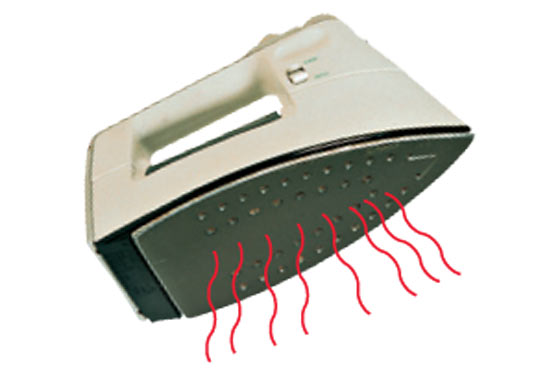
The last time I moved apartments, I tossed out my iron. It took up precious closet real estate, and I’d only used the thing a half-dozen times since my mother packed it off with me to college almost a decade ago. It had been given to me as a basically unused hand-me-down from my older sister; like a lot of young women, she decided she didn’t have much use for such a tool. An iron’s weightiness doesn’t just come from the metal; the object is freighted with connotations of the sort of thankless drudgery we’re supposed to have moved beyond. What was the point of lugging it—and all that—with me? And yet this fall, as I’ve gotten dressed for work in my of-the-moment pencil skirts, I’ve found myself unexpectedly missing having a Black & Decker in my life—and not feeling like the longing makes me a traitor to my gender and generation.
It wasn’t so long ago that a woman could have an office job, at least in a creative field, and get away with leggings and flannel. That was the last aspirational look of choice, to appear like you’d just rolled in directly from doing something too fun to allow time for washing your hair or dealing with nonelastic waistbands. Possibly you wanted to look like you were wearing something too fun’s oversize shirt.
But a more ladylike look has since crept onto runways and into stores: wasp-waisted dresses, swingy coats that seem to cry out for a pillbox hat, coy beribboned heels, pearls clustered everywhere they can possibly cluster. In voluntarily adopting this New Primness, women in their twenties and thirties are giving up nearly 50 years of progress toward gender parity in sartorial ease (or equal-opportunity slobbiness, if you’re inclined to view it that way). Pulling off a perfectly smooth pencil skirt, for all but the most slender women, requires a pair of Spanx, the modern-day corset—and the skirt itself must, must, must not be wrinkled. Not to mention the time and expense of the restorative pedicures you’ll need after days in classic pumps (the word itself a throwback!).
A Wall Street Journal piece on this fresh old-fashioned look quoted Barbara Ehrenreich arguing, “Obviously, a very feminine woman is like a possession—she’s like an object to display.” But that’s not giving the women buying these clothes for themselves enough credit: It’s not that we’re all suddenly obsessed, in a post-Middleton world, with embodying demure wifeliness. Instead, it’s about finding a way to triangulate prettiness and professionalism. (We are marrying later than ever, by the way.)
Single and childless twentysomething city-dwelling women are now outearning men, by a not-insignificant margin, according to data released last year. In the eighties, go-getter women reflected their alpha status by dressing like men, in those broad-shouldered power suits. But now, thanks to whatever nth wave of feminism we’re currently on, looking “pulled together” (as my mother, in spiritual chorus with other mothers, and Stacy London, have said for years) can be done while also enjoying the right to look feminine, without worrying that it will detract from our seriousness of purpose. I guess I’ll be buying another iron and actually learning how to use it. It suddenly seems worth the effort.
Have good intel? Send tips to intel@nymag.com.